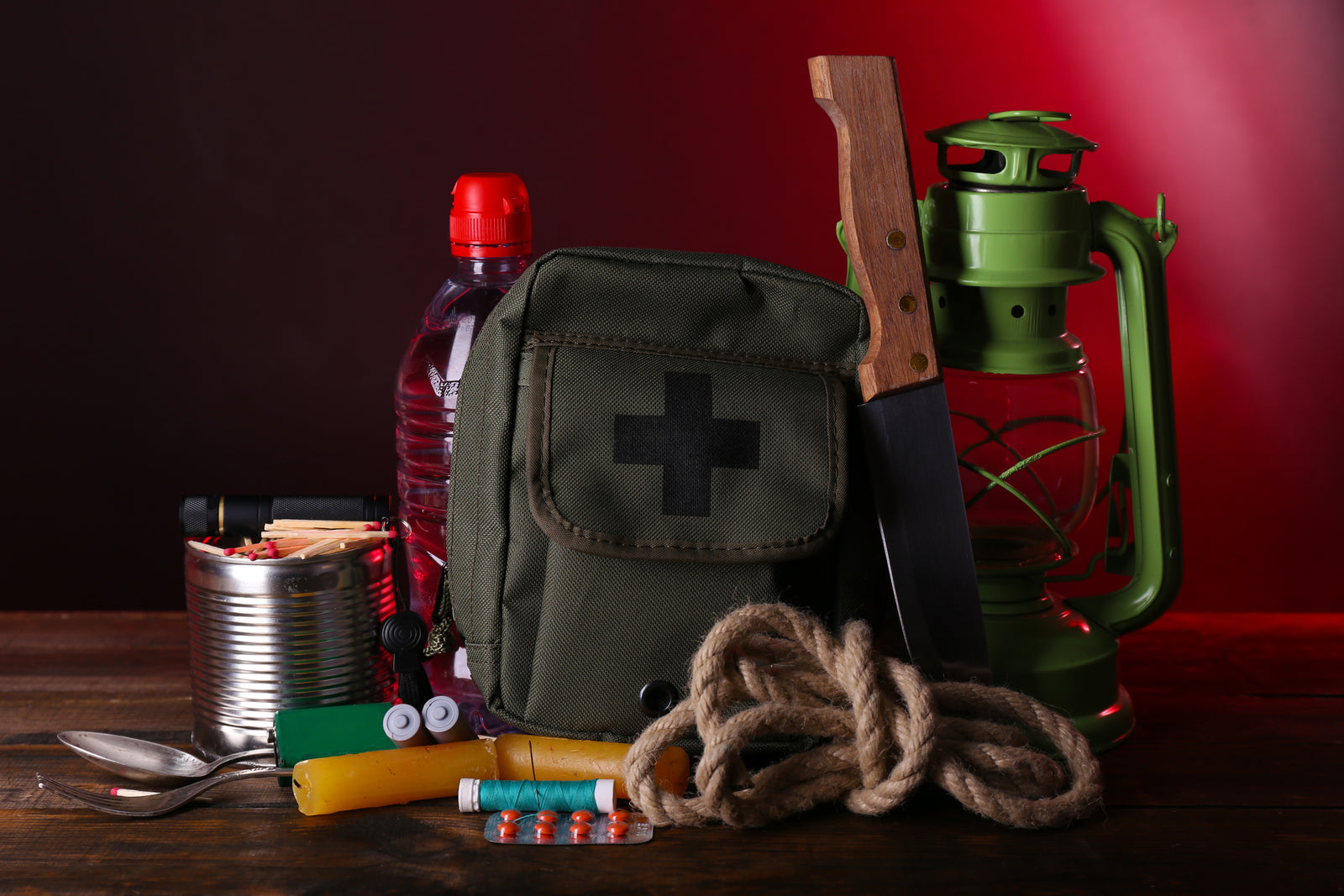How to Prepare for Disasters
November 17, 2020

The year 2020 has been extraordinary in many ways. In addition to the unprecedented global pandemic, wildfires that impacted several Western states and a record number of hurricanes hit the Atlantic and Gulf coasts. (And let’s not forget about the bizarre, hurricane-strength straight-line winds that tore through the Midwest!) Climate change scientists say it’s only going to get worse, so it’s crucial to know how to prepare for a disaster.
Make a Preparedness Plan For You and Your Family
To make sure you and your family are always prepared, first make a plan for what to do when disaster comes your way — whether you have to evacuate or hunker down. Following a few steps can help you prepare and possibly prevent some of the damaging repercussions of natural disasters.
Learn about Evacuation Routes
Whether you live on a coastal or inland shoreline prone to hurricanes, tornado alley, or in fire-prone regions, familiarizing yourself with evacuation routes can prevent the loss of life.
Gather Important Documents
Put all your important documents together (e.g. passports, Social Security cards, etc.) in a waterproof container such as a zippered gallon freezer bag. Make sure the bag is in a convenient place so you can grab it in case you need to evacuate.
Keep Your Valuables Safe
When it comes to natural disasters, you don’t always know what to expect, so it’s best to store cash, jewelry, family photos, important papers, and irreplaceable items in environments that can withstand such events.
Save Your Family Memories, Photos, and Home Videos
It’s common for people to store photos in shoeboxes in their basements or attics, but precious memories can go up in smoke in an instant or get soaked in floods. Cardboard boxes and paper photos won’t fare well against fire and water damage from extinguishing the fire! (But this is a bad idea even when there’s zero risk of natural disasters because photos deteriorate over time.)
While wet photos can sometimes be restored, this is time-consuming and can be costly if you hire a professional to perform this service.
So you don’t have to worry about keeping your family memories safe when a disaster comes your way, prepare in advance by ensuring that all your photos, videos and reels are digitized and safe.
Once your photos and videos are digitized make sure to save them to a cloud service or save them on a memory card you can take with you if you need to leave.
What's the Best Way to Save and Backup Important Files?
To make sure that your digitized photos are safe, here are a few helpful tips:
- Don’t forget about digital images. These too can disappear into thin air if the devices they’re stored on suddenly die and you have no backup.
- Make a copy of memory cards and store them offsite (e.g., safe deposit box) or send a copy to friends or relatives.
- Buy a good quality fire safe for under $100 to store USB drives and memory cards. You can also use it to store important papers, jewelry, and other small valuable items.
- Back up digital files on an external hard drive at home and offsite in cloud storage
- Take photos of items near and dear to your heart (e.g. birthday cards, trinkets, and gifts from your loved ones)
Digitizing fragile media is the most effective step you can take to protect and preserve family memories for future generations to enjoy! Here at ScanDigital, we can help you preserve your favorite photos, videos, and reels.
Create a DIY Survival Kit
Being prepared with the things you will need in a disaster is essential. After an emergency, you may need to survive on your own for several days. You will want to make sure that you have enough food, water and other supplies to last for several days. Here are some items to include in your DIY survival kit in preparation for a disaster:
- Flashlights (don’t use candles)
- Fresh batteries
- Battery-operated radio
- Fully-charged cell phone
- Portable phone chargers
- First aid kit
- Dust masks
- Non-perishable foods
- Canned dog/cat food and treats (if you have pets)
- Manual can opener
- Moist wipes or hand sanitizer
- One gallon of bottled water per person per day
- Local maps
- Wrench or pliers to turn off utilities
6 Tips on Preparing for Immediate Natural Disasters
-
Tune Into Local Radio or TV Stations
Listening to local news is one of the simplest ways to prepare and stay informed about coming storms, forest fires, and other catastrophic weather. -
Protect Your House
At the first sign of an approaching storm, close all your windows, secure outside doors, and unplug electronic equipment.
-
Be Smart With Your Smartphone
Given that your landline may be knocked out and your smartphone is the only way to communicate, you’ll need to extend its battery life. Keep it on low-battery mode, turn off Bluetooth, Wi-Fi, GPS and location services, and don’t forget to pack a portable charger or two in your disaster kit. -
Stock up on Essentials
It’s a wise idea to stock up on nonperishable food, water, and prescription and over-the-counter medicine that lasts a week and include these in your disaster kit. And if you have pets, remember to stock up on food, treats, and a few toys.
-
Fill Up Your Car with Gas
If you have to evacuate quickly, a filled gas tank can prevent delays getting out of the area due to long lines at the gas station — or even worse, running out of fuel before reaching your destination.
-
Beware of Water — Inside and Outside
During floods or hurricanes, tap water may become contaminated and unsafe so don’t drink it or use it for cleaning. And experts advise to avoid being near plumbing during severe thunderstorms to avoid being struck by lightning.
When you venture outdoors, stay away from standing water due to possible raw sewage and live electric lines. And avoid floodwater because it can harbor harmful bacteria and attract mosquitoes that may be carrying disease (e.g. West Nile).
Emergencies of any kind can be stressful and scary, but having a plan and being prepared will go a long way to help.
Leave a comment
Comments will be approved before showing up.
Also in Blog

How to Enlarge a Picture for Printing
July 20, 2021

How to Make a Digital Photo Album
July 20, 2021

How to Share Digital Media
July 20, 2021
Purchase
CONNECT
We're here to help!
For All General Inquiries:
Phone: 888.333.2808
Email: info@scandigital.com
Business Hours (EST):
Monday - Friday: 9:30am - 5:30pm
ScanDigital Chicago
(Drop-Off & Pick-Up Only):
Phone: 888.324.6436
Business Hours (CST):
Monday - Friday: 10:00am - 4:00pm
News & Updates
Sign up to get the latest on sales, new releases and more…
© 2025 ScanDigital, Inc..
